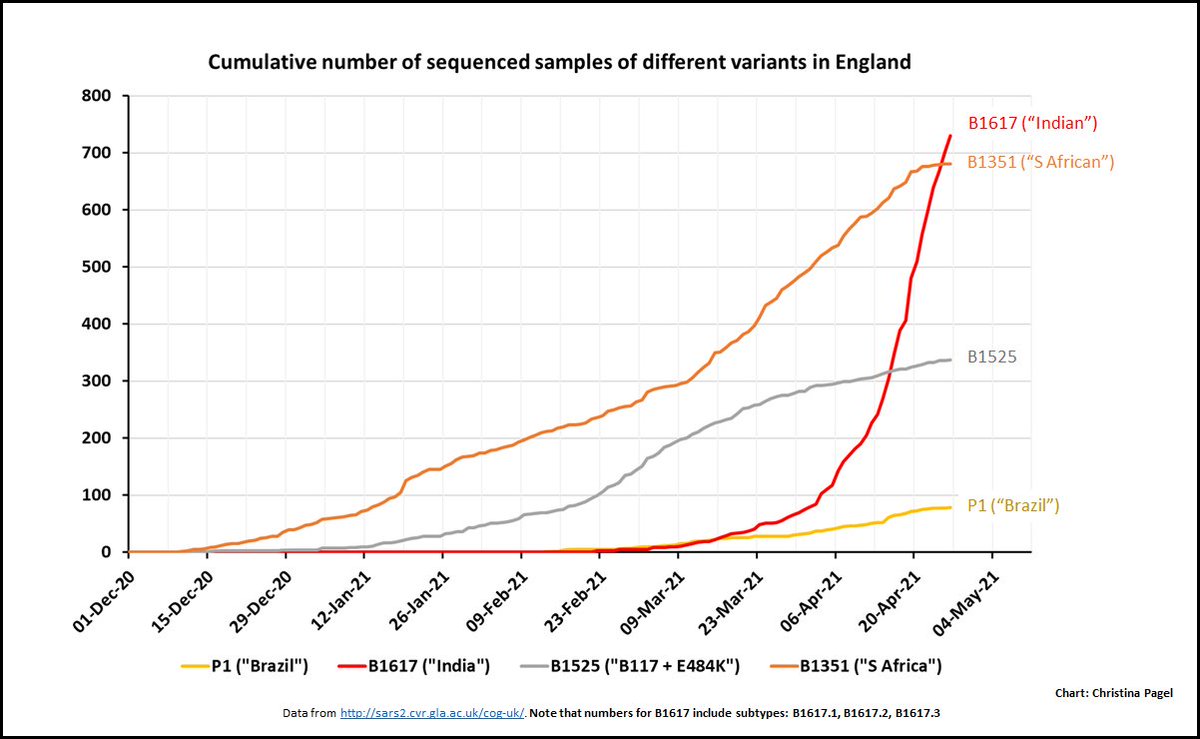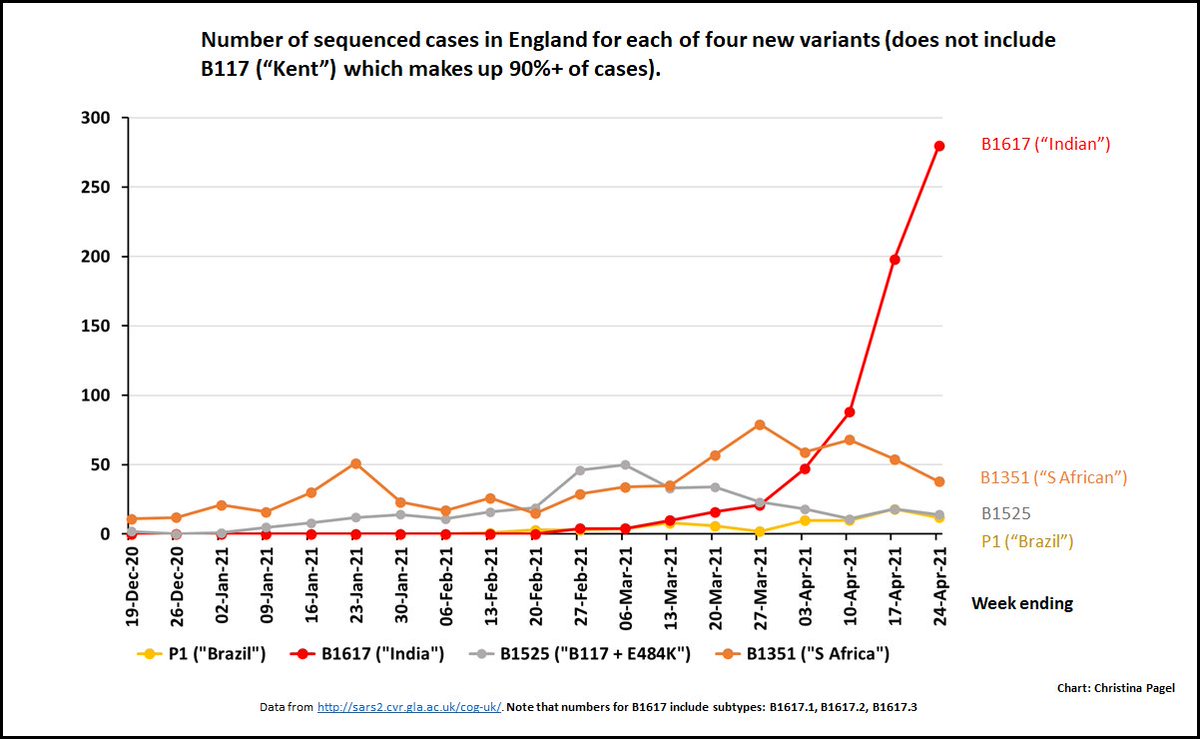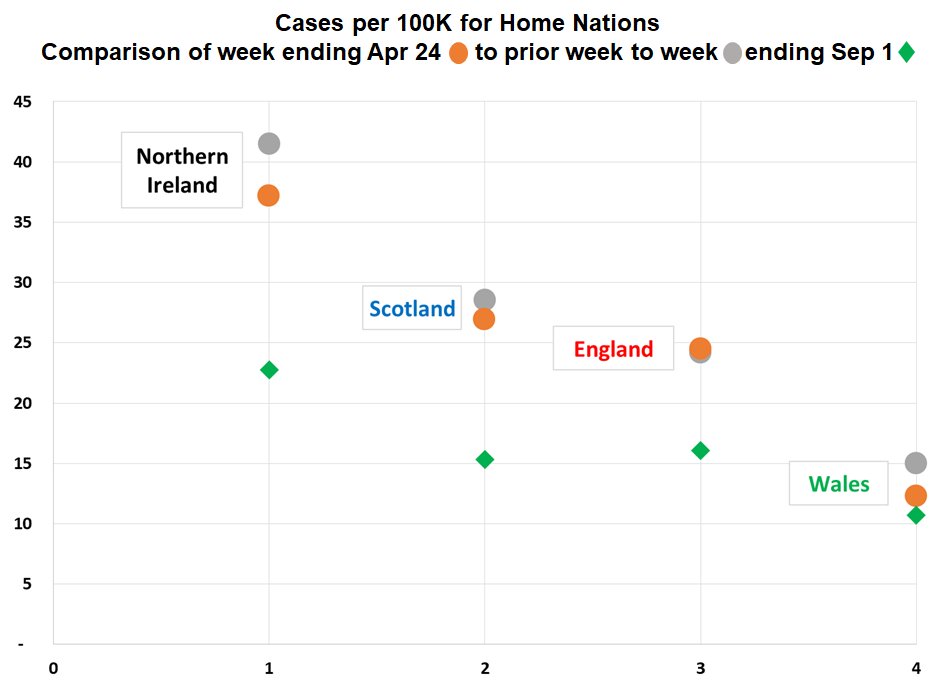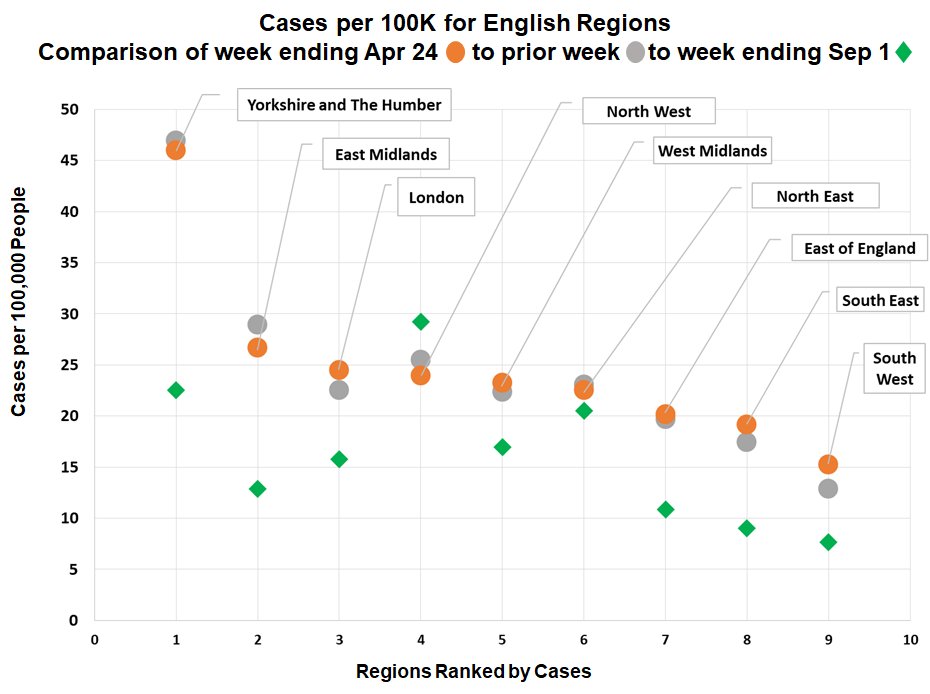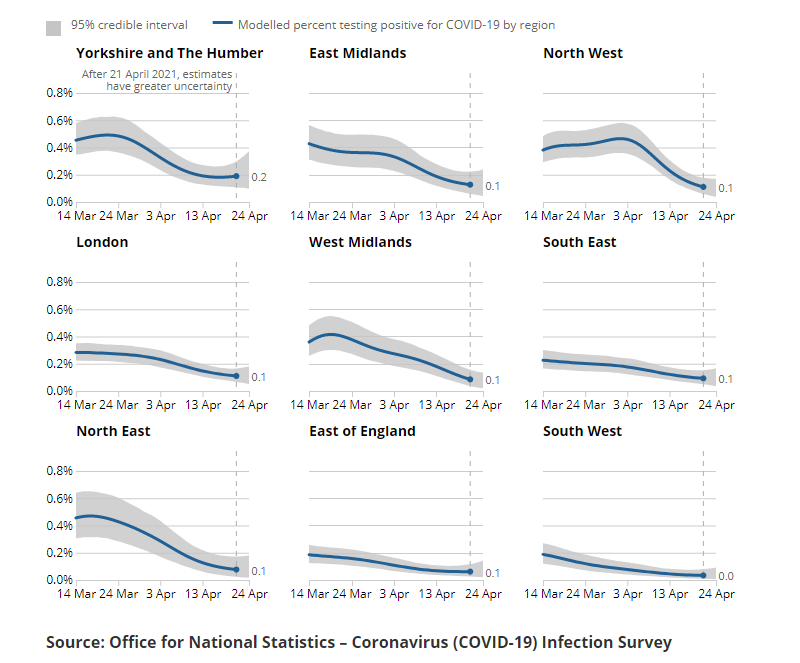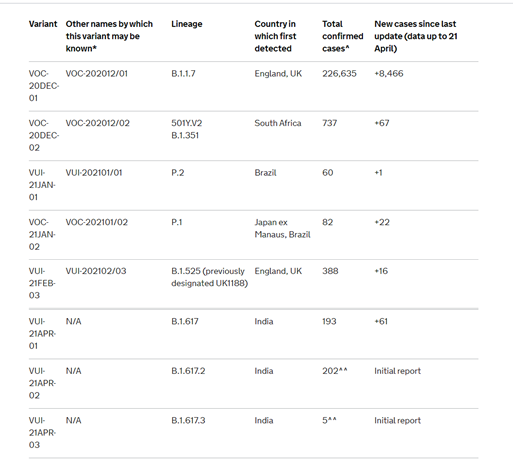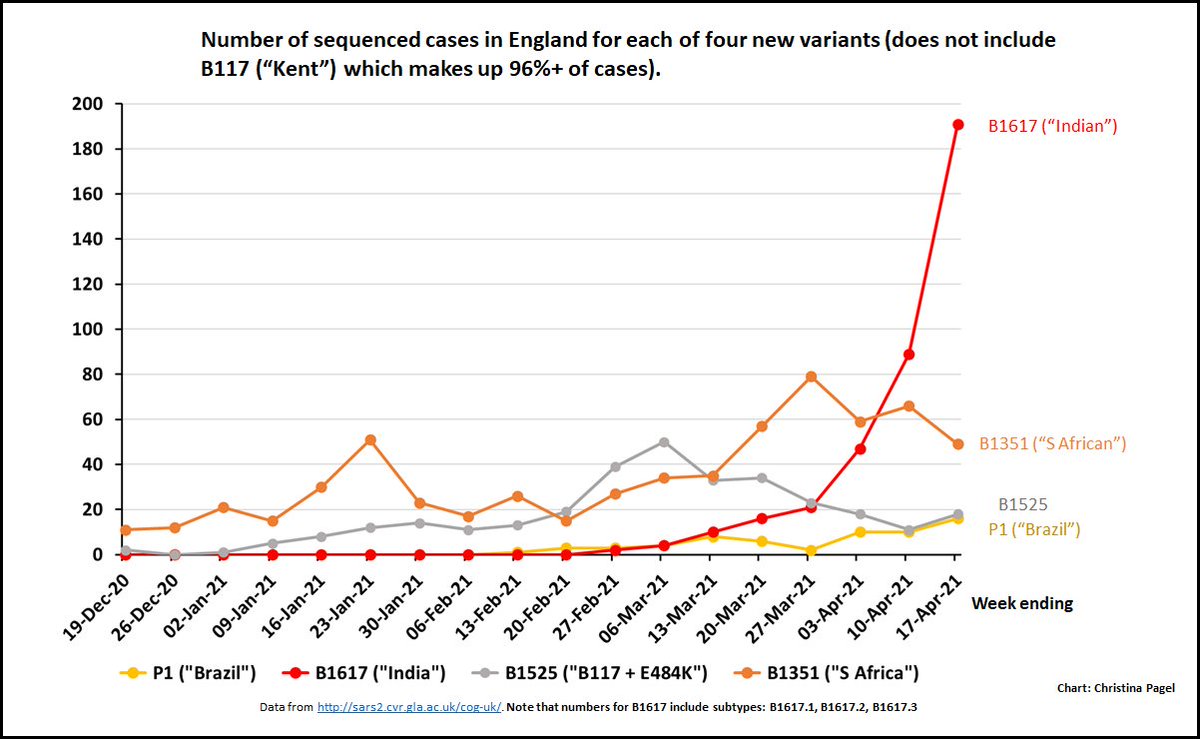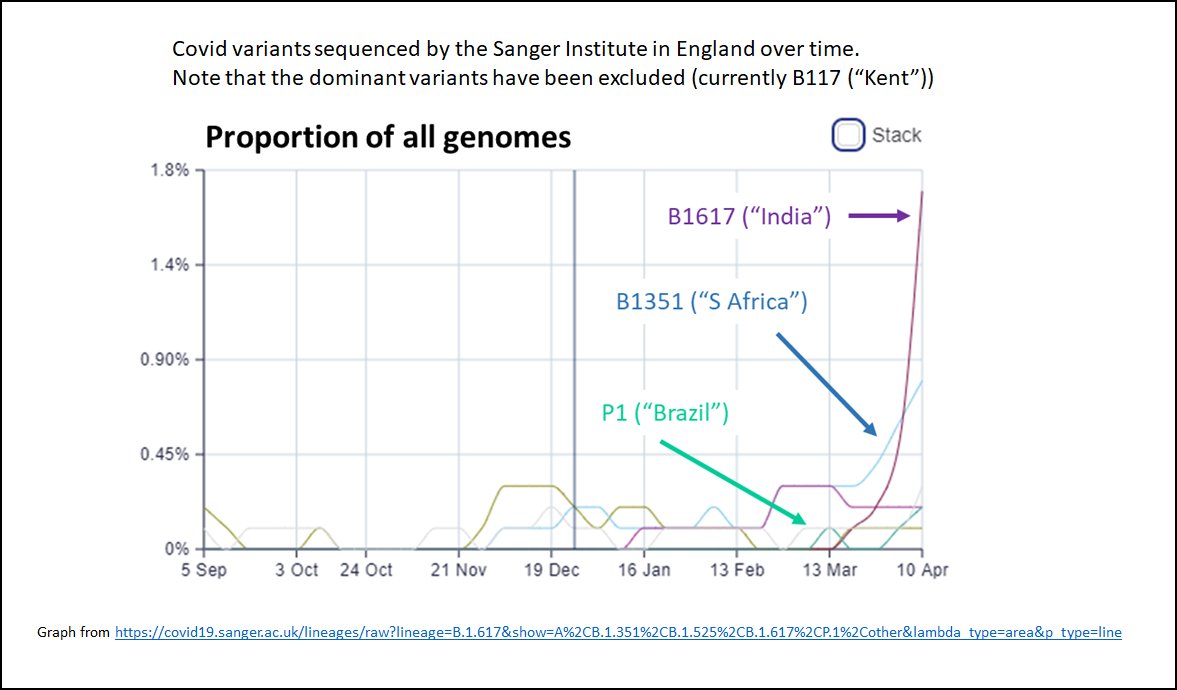
The Maldives have similar vax rates to us & the Seychelles much higher (full) vaccination rates
Below is fully vaccinated & then at least one dose of vaccine.
Both Maldives & Seychelles are using a mix of the Chinese vaccine (Sinopharm) and Astrozeneca.
Israel used Pfizer.

Below is fully vaccinated & then at least one dose of vaccine.
Both Maldives & Seychelles are using a mix of the Chinese vaccine (Sinopharm) and Astrozeneca.
Israel used Pfizer.

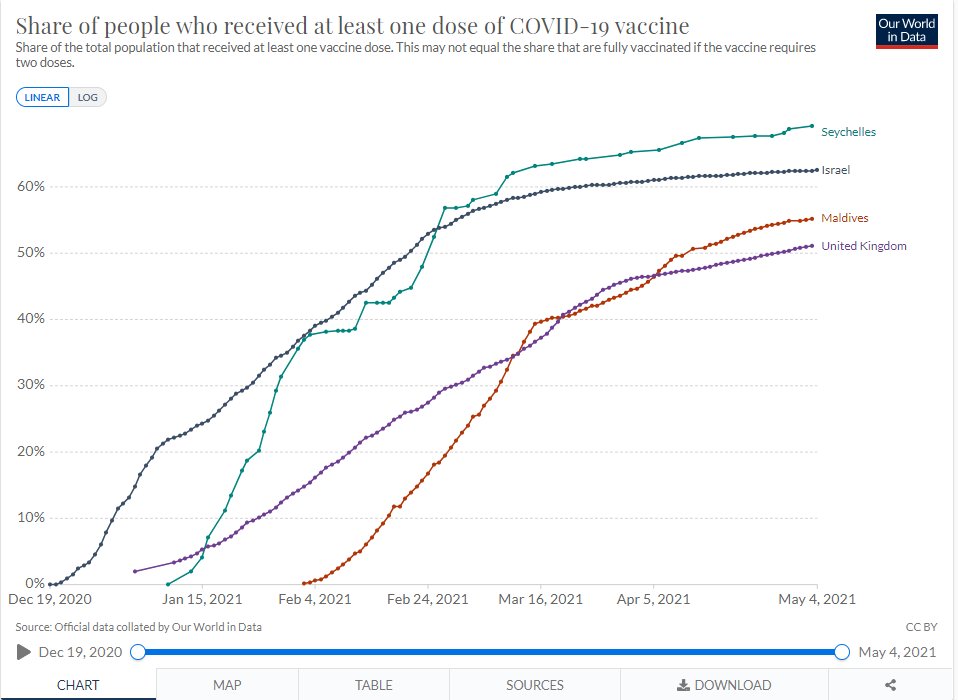
Both Seychelles and Maldives are currently experiencing huge Covid surges.
The Seychelles has just locked down for two weeks. bloomberg.com/news/articles/…
The Seychelles has just locked down for two weeks. bloomberg.com/news/articles/…

I don't know why the Seychelles experience is so different from Israel.
One difference is that Israel has had longer with a high percentage of fully vaxxed people. It also used a different vaccine.
One difference is that Israel has had longer with a high percentage of fully vaxxed people. It also used a different vaccine.
There *may* be different variants (Maldives & Seychelles are in Indian Ocean) in different countries.
But we have no evidence of this.
However, fair to say that high vax rates alone are not nec enough to stop a surge in cases.
Israel has opened up very slowly & cautiously.
But we have no evidence of this.
However, fair to say that high vax rates alone are not nec enough to stop a surge in cases.
Israel has opened up very slowly & cautiously.
• • •
Missing some Tweet in this thread? You can try to
force a refresh


